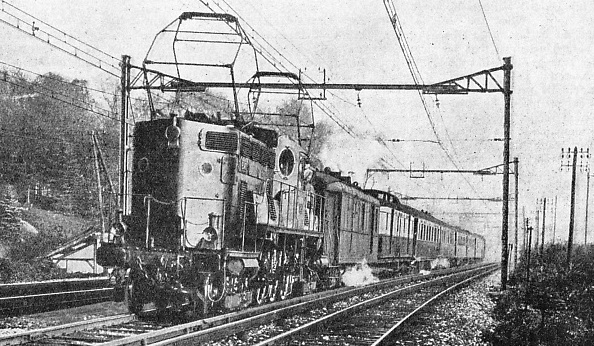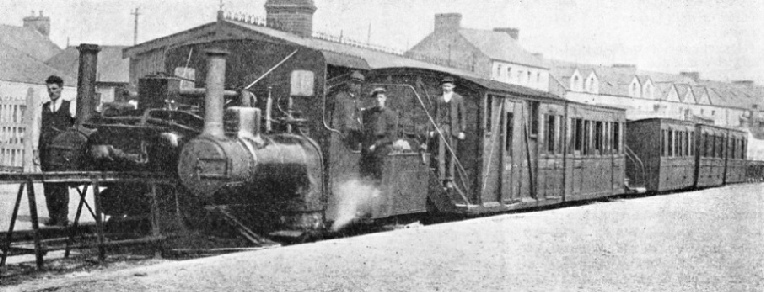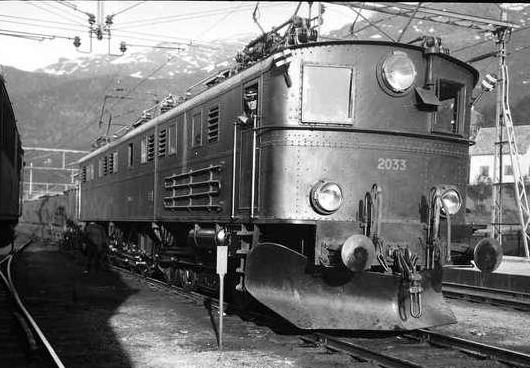
© Railway Wonders of the World 2012-


Part 40


Part 40 of Railway Wonders of the World was published on Friday 1st November 1935.
This issue contained a black and white art plate illustrating the overhaul of Underground rolling stock. The plate was attached to page 1261, or the fifth page of this number.
The Cover
This week’s cover shows a standard electric locomotive on the Ofoten Railway, North Norway, at speed.
The picture can be identified as an
NSB El 4 2033 of the Norwegian State Railway. The cover is based on a photograph taken at Narvik railway station in 1930, which is also shown below.
This is one of very few covers not to feature a steam engine, and is the only cover in the series to show an electric locomotive.
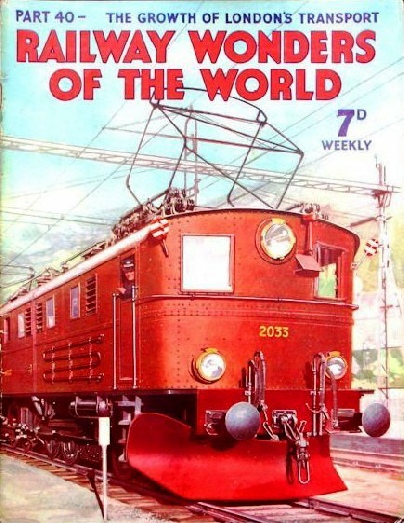
The Overhaul of Underground Rolling Stock
THE OVERHAUL OF UNDERGROUND ROLLING STOCK owned by the London Passenger Transport Board is carried out at their Acton Works, Middlesex. The picture shows a section of the car body shop where brake equipment is handled. Units to be overhauled here, which include drivers’ brake valves, triple valves, tripcocks and air door engines, are distributed to the repair benches by a moving conveyor. The number of cars overhauled each year at Acton amounts to about 1,500.
(between pages 1260-1261 )
The Listowel and Ballybunion Railway
A LARTIGUE MONORAIL TRAIN on the former monorail line which was laid between Ballybunion and Listowel, in County Kerry, Ireland. The 10-mile stretch of track consisted of a single rail carried along the top of a low A-shaped trestle, on which the vehicles ran astride. Twin locomotives, with separate boilers, fireboxes, and smoke-boxes, had each three coupled wheels of 2 ft diameter running along the single rail. There were also four guide wheels, bearing against the guiding rails. The maximum speed was restricted to 18 miles and hour.
(Page 1284)
The Railways of Greece
This land of venerable antiquity, which so greatly influence civilization, is now influenced herself by the modern world she helped to build. To-day there are some 1,600 miles of track laid in Greece, a large portion of which is Government controlled. Three lines connect the capital, Athens, with her port, Piraeus; one of these lines has been electrified, the other two are trunk lines, leading away into the interior. Some idea of the importance of the railways in Greece may be gained from the fact that in the year ending March, 1934, the goods tonnage conveyed amounted to 1,735,500.
(Pages 1262-1270 )
Baker Valve Gear
A CLOSE-UP of the Baker valve gear applied to a New York Central fast freight locomotive. This gear was invented in 1903 and first used on a traction engine. It was later re-designed for a railway locomotive in 1908.
You can read further technical details on the Baker Valve Gear in Charles McShane’s Modern Locomotive Valves and Valve Gears (1917).
(Page 1273)
Through Southern France
The Paris, Lyons and Mediterranean Railway has, including its lines in Algeria and Morocco, one of the largest systems in the French Republic. It also includes in its great network the route of the pioneer French line between Lyons and St Etienne, opened in 1828. To-day the PLM, as it is familiarly called, has main lines to the Riviera, the monopoly of traffic to Lyons and Marseilles, and direct contact with Italy and Switzerland. This chapter describes the PLM and also some of the famous trains on its line, such as the “Cote d’Azur Pullman”.
(Pages 1277-1283)
The “Sud Express”
The “SUD EXPRESS” of the Paris-Orleans-Midi line, being hauled out of Paris by a 4-6-4 electric locomotive. The Midi and the Paris-Orleans Railways began joint operation in 1934. The two companies have over 1,200 miles of track electrified, and further conversions are in progress.
(Page 1280)
Railway Curiosities (Part 1)
Some unusual aspects of train operation. This chapter deals mainly with ideas and inventions that have had varying fortunes. This article is concluded in part 41.
(Page 1284)
Contents of Part 40
The Trains of Uruguay (Part 2)
Growth of London’s Transport
The Overhaul of Underground Rolling Stock (art plate)
The Railways of Greece
Locomotive Valve Gears - 3
Through Southern France
Railway Curiosities (Part 1)
A Carriage of the Central Uruguay Railway
FIRST-CLASS CARRIAGE owned by the Central Uruguay Railway. With its associated lines, this railway company operates some 120 passenger vehicles. The coaches are lighted by electricity.
(Page 1253)
Growth of London’s Transport
London is the largest city in the world and also the greatest railway centre, and the first capital to be served by a public railway. Within a radius of twenty-five miles from its centre there are a larger railway mileage than in any other area of comparable size, a larger number of stations, and the greatest suburban electric railway network in the world. This chapter describes travel development in and about this Great City.
(Pages 1256-1261 )

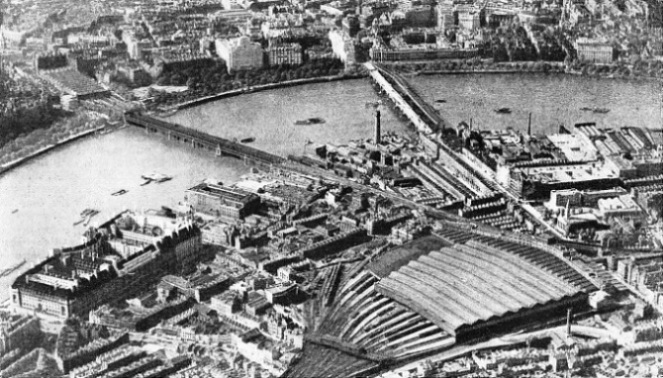
Britain’s Largest Station
GREAT BRITAIN'S LARGEST STATION, Waterloo, can be seen in the foreground of this aerial photograph. On the far side of it, to the right, is Waterloo Junction, with the lines of the Eastern Section of the Southern Railway coming in, and running over the river across Hungerford Bridge (left) to Charing Cross Station. The old and new (temporary) Waterloo Bridges can also be seen.
(Page 1257)
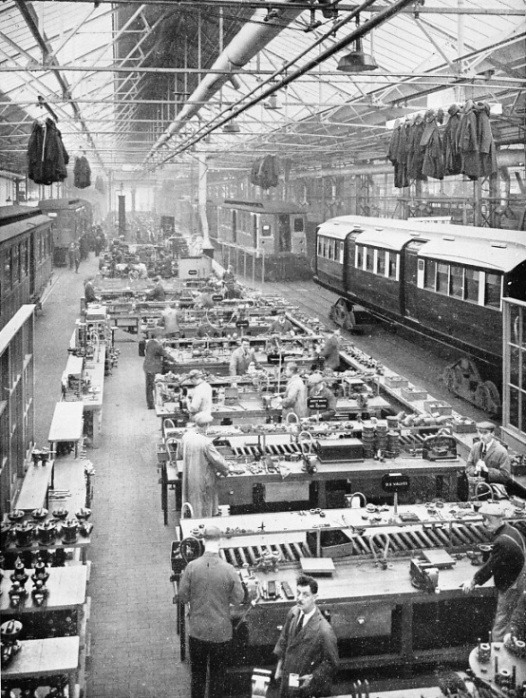
The Greek Electric Railway
THE GREEK ELECTRIC RAILWAY runs for six miles from the Piraeus, the port of Athens, via New Phaleron to Concord Square in Athens. The line was electrified in 1904. An extension, eight and a hlaf miles long, runs from Concord Square to the summer resort of Kephisia.
(Page 1265)
Locomotive Valve Gears - 3
A third chapter on methods of distributing steam to the cylinders. This article describes the Southern, Baker, Young, poppet, Caprotti and conjugated valve gears. This is the fourteenth article in the series Design and Invention.
(Pages 1271-1276 )
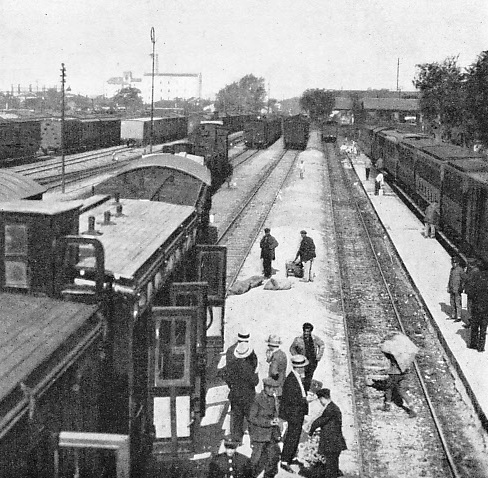
Salonika Station
SALONIKA STATION, 315½ miles from Athens, is an important terminus. It serves as an interchange point between the main line from the Piraeus to the Yugoslav frontier and the lines west to Monastir and east through Thrace to Turkey-in-Europe. Salonika is the third largest town in Greece. It is also one of the busiest seaports in the Levant.
(Page 1263)
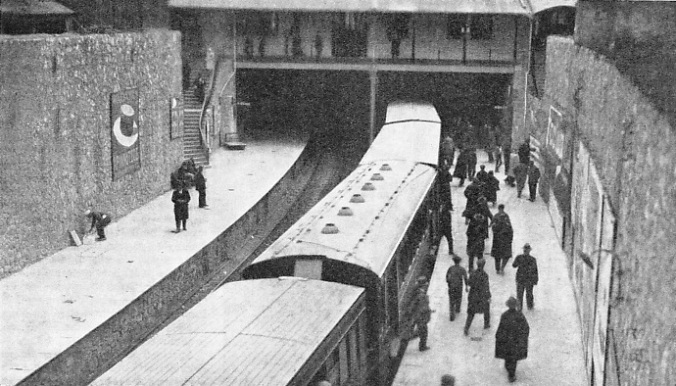
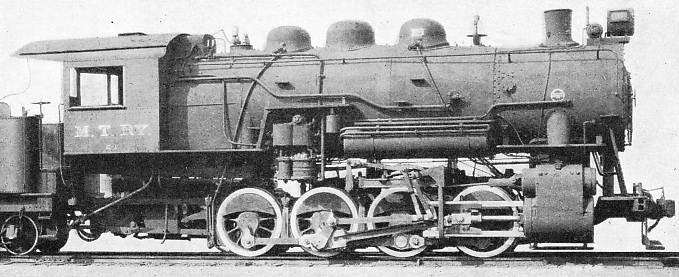
Southern Valve Gear
THE SOUTHERN VALVE GEAR applied to a Midland Terminal eight-wheeled shunting locomotive. This gear was invented by an American engine-driver. It has not been used outside America in full-size practice, but has proved satisfactory in that country.
You can read further technical details on the Southern Valve Gear in Charles McShane’s Modern Locomotive Valves and Valve Gears (1917).
(Page 1271)
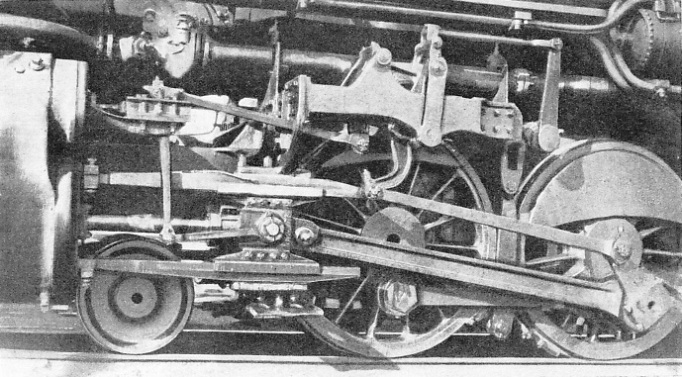
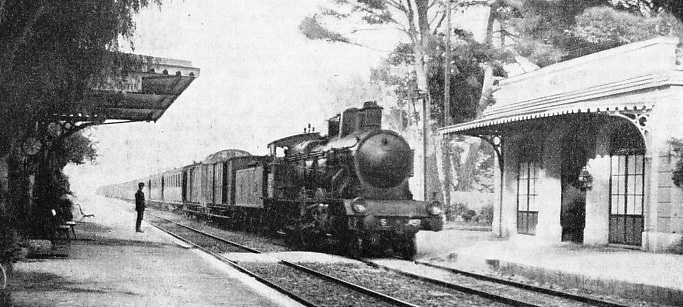
On the Main Line of the PLM
ON THE MAIN LINE OF THE PLM - the Paris, Lyons and Mediterranean Railway - a Mentone to Paris express passing through the station of St Augustine, near Nice. The famous “Cote d’Azur Pullman” covers the journey of 689 miles between Paris and Mentone in thirteen hours.
(Page 1277)
